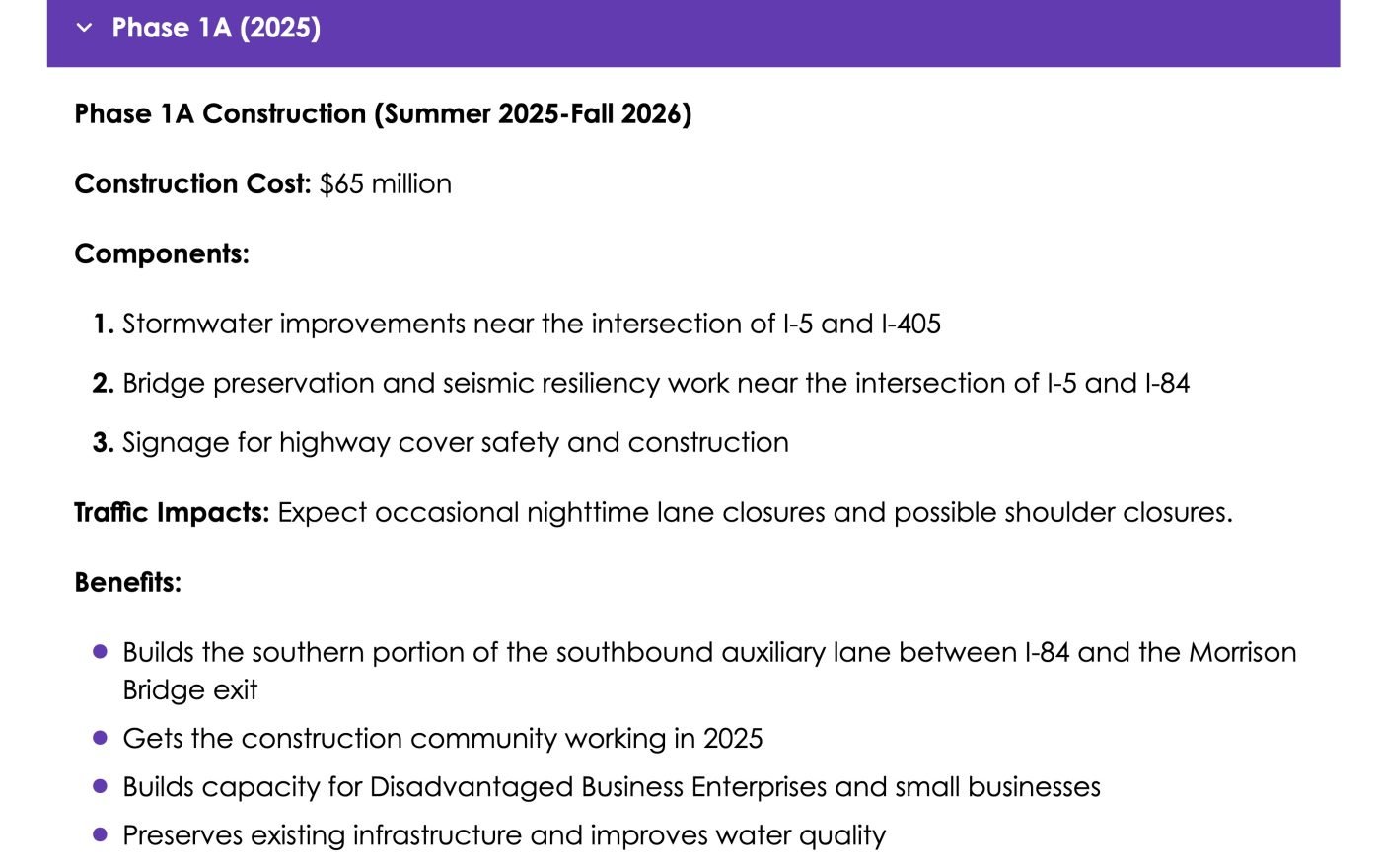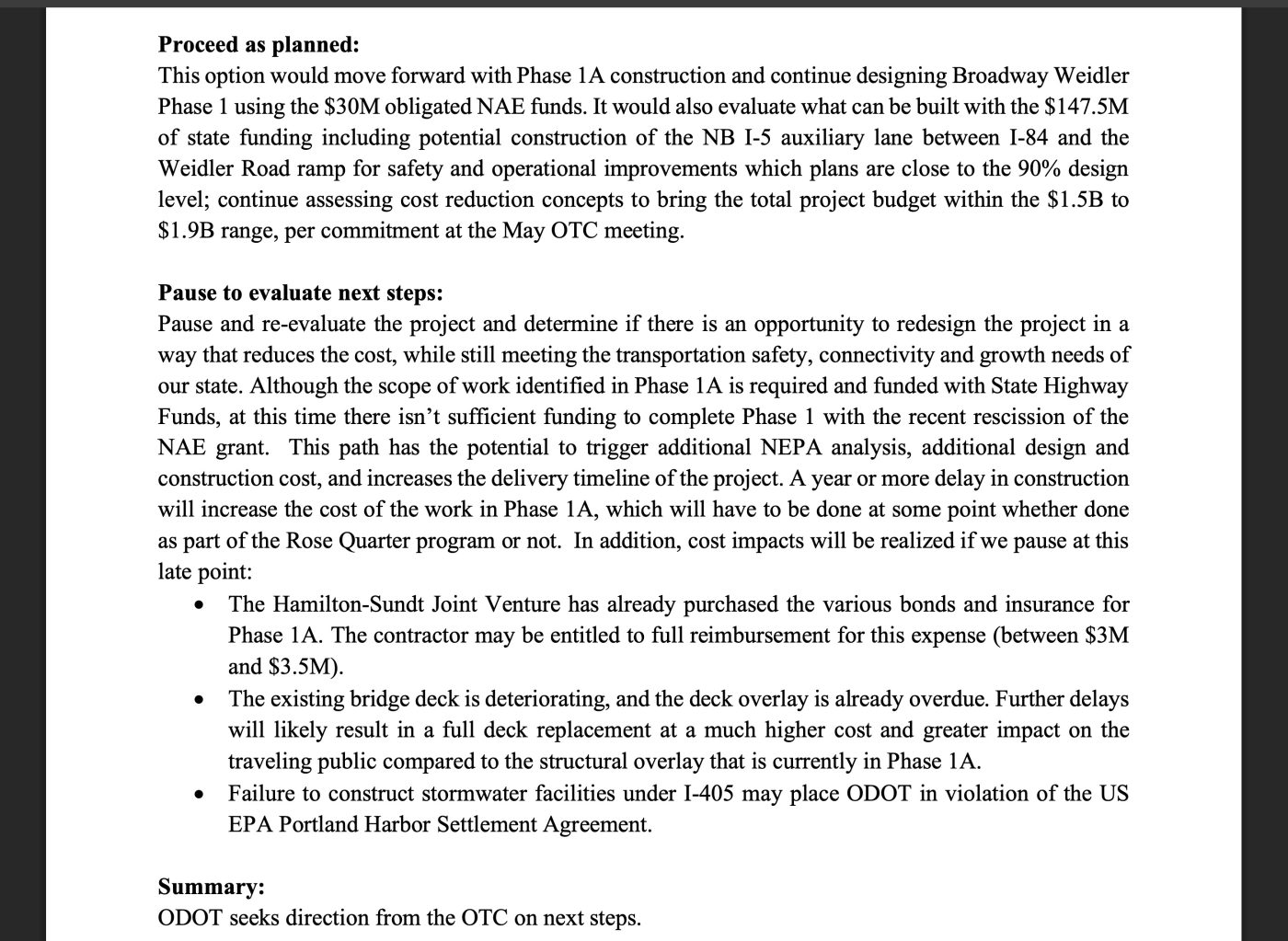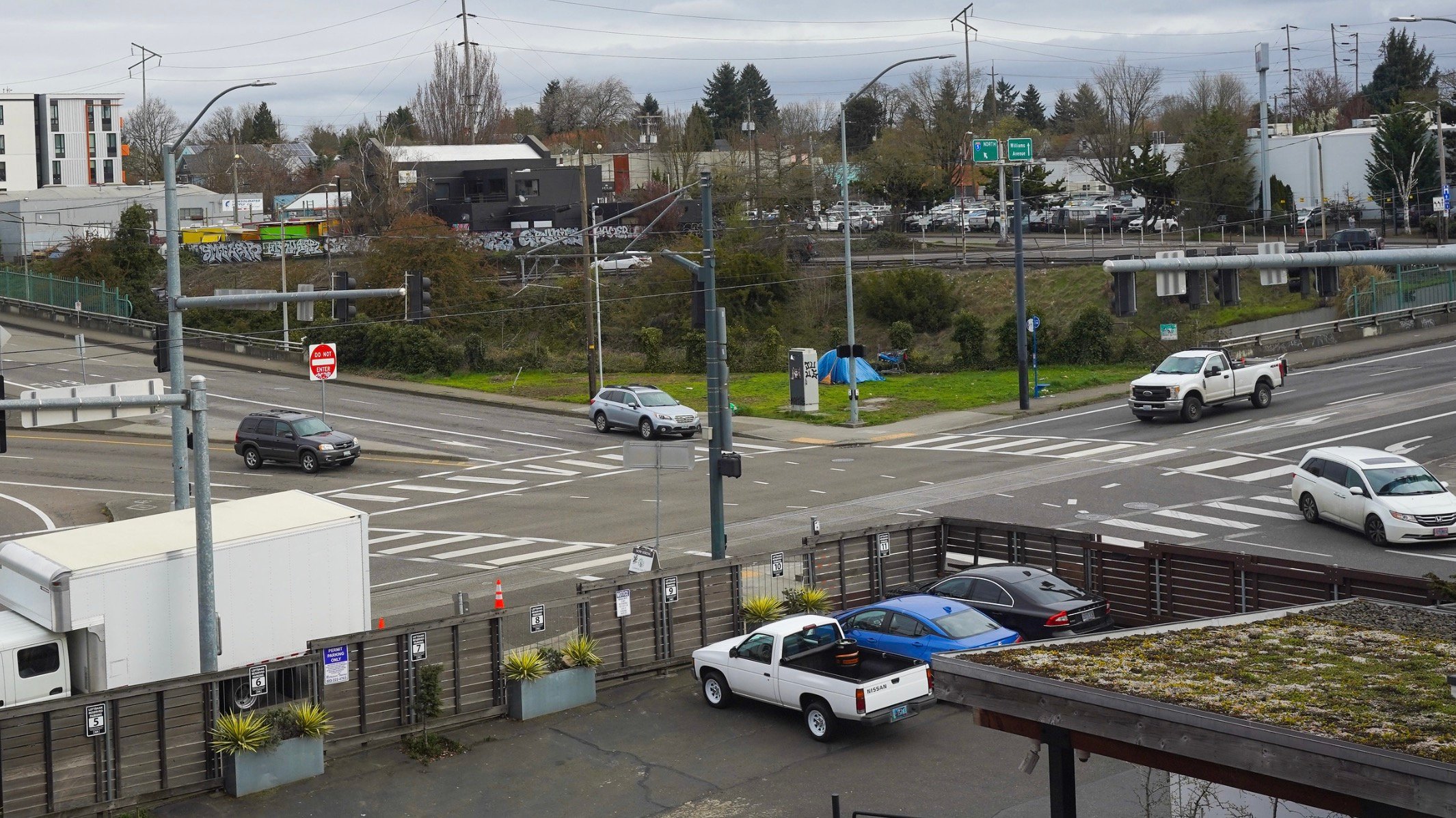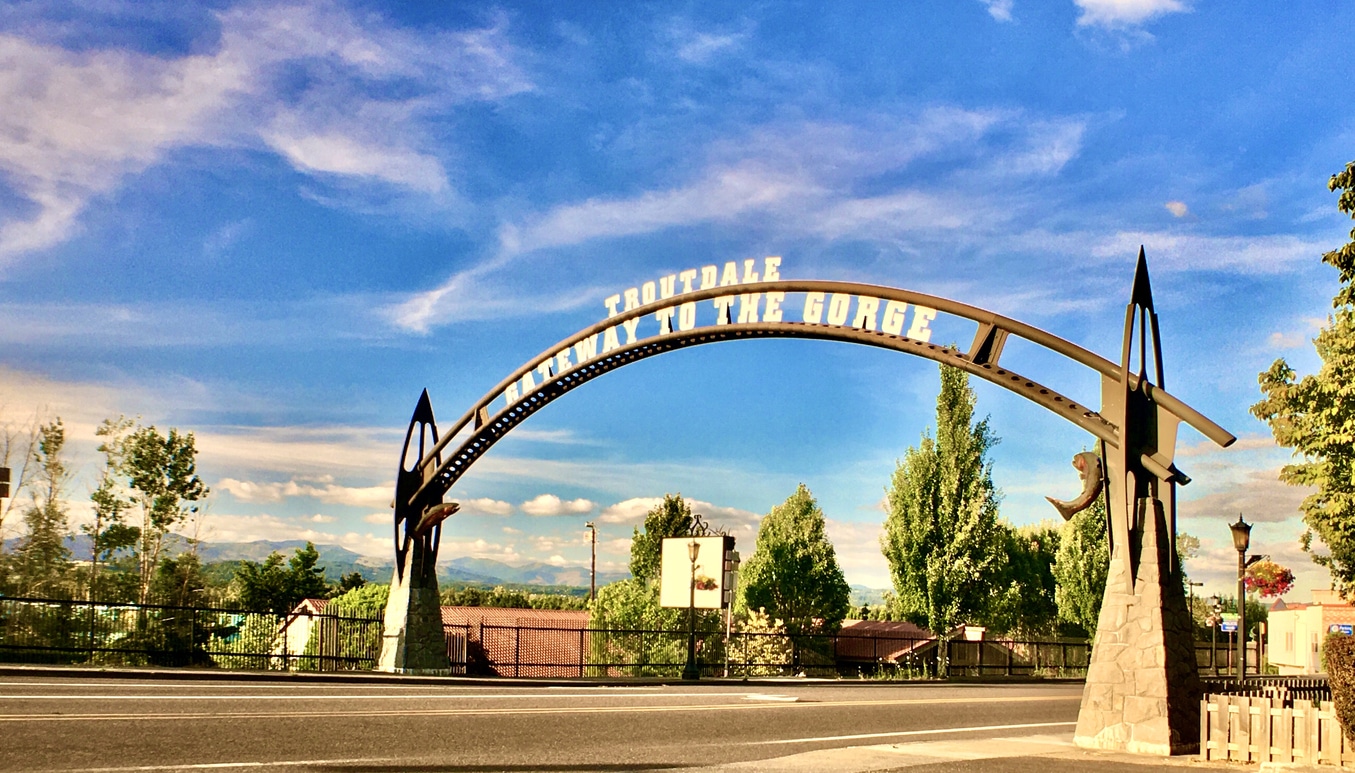Transportation Commission says state can move forward with I-5 Rose Quarter project – BikePortland

The Oregon Transportation Commission has given the I-5 Rose Quarter project a lifeline. The five member, governor-appointed body faced a stark decision at their meeting this morning: proceed with the project, or pause and reassess. They chose to approve funding for a project while warning that there’s no more funding for the project.
Because of a series of significant setbacks around funding, lawsuits, and a staffing exodus in recent weeks, the Oregon Department of Transportation came to the OTC to make sure it was prudent for them to continue. A package of preliminary construction projects estimated to cost $75 million (of which $30 million comes from a federal grant already in the books) known as Phase 1A (see below) has been set to break ground on August 25th. But given the dire funding picture sharpened at the end of June when lawmakers failed to pass funding for the project, it became unclear if that groundbreaking should move forward.
While OTC commissioners expressed grave concerns about the funding picture for this $2 billion megaproject that aims to expand I-5 between I-405 and I-84, build caps over the freeway and invest in surface street safety improvements — they all voted to proceed.
The meeting began with a slew of public commenters that encouraged OTC to pause the project. The mood in the room swung when community and advocacy leaders that represent the Black community came up to the mic — all of whom strongly favored moving forward with the project in the name of economic development for the people who had their homes destroyed when I-5 was initially built.
“We have the opportunity to marry restorative justice wit restorative economics and restorative development. So we would ask that we look at this moment to begin to put shovels into the ground,” said James Posey, the leader of Portland Chapter of the National Association for the Advancement of Colored People (NAACP).
Nate McCoy, executive director of National Association of Minority Contractors added that, “ODOT is in a place to really bring forward some opportunities in gentrified communities in northeast Portland by building I-5… Please, please, please, help us bring this project across the finish line.”


And arguably the most influential voice throughout debates around this project, Albina Vision Trust Director of Government Affairs JT Flowers, said, “I did not come here today to litigate with White environmentalists who have absolutely no connection to our people, our pain, or our collective struggle for progress… the reconnection of a community can and will not happen if we continue kicking the can down the road.” Flowers’ comment came after several advocates spoke in opposition to the project and recommended a pause.
Flowers’ powerful speech illustrated an important element in the debate around the project: The main organized opposition to the project (anti-freeway advocates and environmental justice nonprofit leaders) is almost all White. The most important supporting voice (Albina Vision Trust, racial justice and Albina community leaders, construction company owners, etc.) is almost all Black.
Prior to the vote, OTC Commissioner Lee Beyer asked ODOT Deputy Director of Finance Travis Brouwer what would happen after the OTC approves Phase 1A. ODOT would have $137.5 million in the bank to spend on the project after Phase 1A. Brouwer replied to Beyer that, “We have not gotten to the point where we can tell you what we could do with $137 million in terms of construction, or whether there are viable options for moving forward.”
There would need to be a design and re-scoping process to figure out what parts of the $2 billion project could be built with $137.5 million. At that point in the meeting, ODOT Urban Mobility Office Director Tiffani Penson interjected to clarify that, “$137 million is not enough money to start building the [I-5 freeway] cap… It’s to improve some safety things like ramps and some things like that that need to happen, but we will definitely need more money to start Phase 1.”
Phase 1A is a preliminary package of work that will make stormwater improvements (required by an EPA harbor settlement), and bridge preservation and seismic resiliency work near the I-5 and I-405 interchange, and signage for the highway cover safety and construction. The contractor who won the bid for the Phase 1A work has already hired workers and is ready to go. ODOT listed that contract as one of the risks of not moving forward.
Toward the end of the conversation, Deputy Director of I-5 Rose Quarter Project Monica Blanchard shared a powerful comment about what she feels is at stake with the decision:
“The cost of not [moving forward is that we] will be sued for being out of compliance for our harbor agreement. Will be sued by all the contractors that have incurred $4 million in bonds and hired all these people that could have been working on other jobs, that have been standing by waiting for this to happen because it’s supposed to go to construction in a couple weeks… There’s a cost to trust, and this is a cost that we’re passing on to every future project. So if we reneg on Phase 1A, how much does that really cost us? I don’t think we can even calculate that. So it’s not a it’s not a feasible option.”
Loud claps erupted in the room after Blanchard’s comment.
In the end, the OTC voted 5-0 to continue with the project and they once again chose to the can down the road when it comes to the larger — still unanswered — questions about how or if the project will ever find funding necessary for completion.
“I really feel strongly that we need to to move forward with Phase 1A,” said OTC Chair Julie Brown. “With that said, everyone in this room needs to understand that beyond that, there is no money… We are not saying that we are going to move forward with a complete Rose Quarter.”
Share this content:















Post Comment